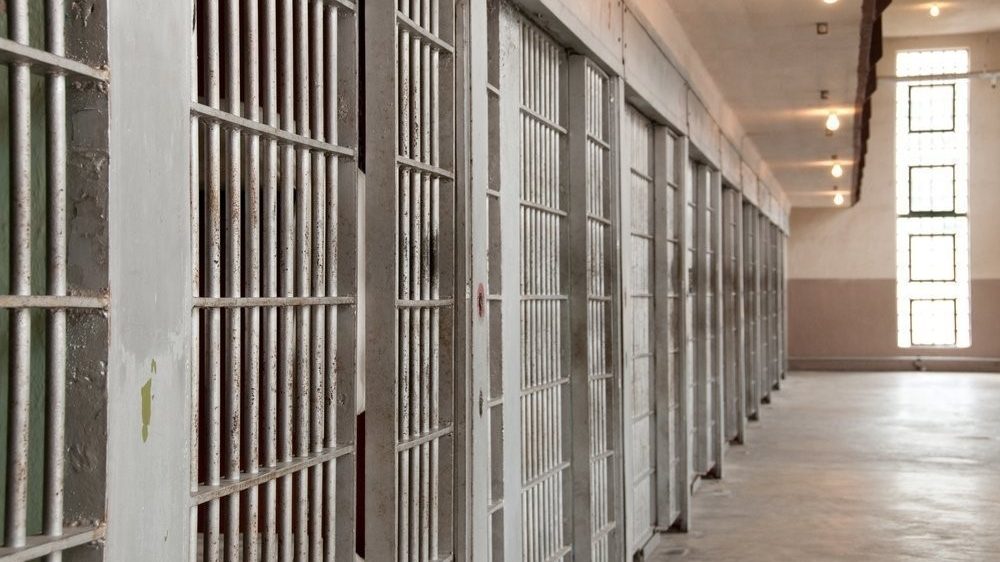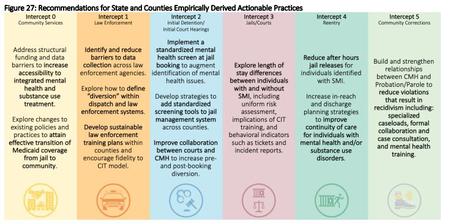Study Finds Treating Inmates’ Mental Health Reduces Their Risk of Returning to Jail
Wayne State researchers looked at programs in 10 Michigan counties. They found early intervention also reduces jail populations.


A new study offers a solution to the problems of jail overcrowding and recidivism in Michigan: Invest more in mental health and drug treatment.
Wayne State University’s Center for Behavioral Health and Justice spent five years reviewing treatment and jail-diversion programs in 10 counties. Researchers found that people who got treatment for mental health disorders were less likely to return to jail.
“Training law enforcement to recognize the signs and symptoms of mental illness is really important,” says Sheryl Kubiak, dean of WSU’s School of Social Work who led the study. “When we did pre- and post-interviews, officers would tell us things like they didn’t believe in mental illness, they just thought it was bad behavior.”
“If we can decrease the number of people who go into costly confinement and deter them to treatment, I think we will do a lot better.” — Dr. Sheryl Kubiak
The study shows that after receiving training, law enforcement officers were 38 times more likely to take someone to a crisis center than to the local jail or the emergency room. Two years later, they were still 27 times more likely to do so. It also shows that when corrections officers who work inside the jails receive training, they’re better equipped to deescalate problems and 50 percent less likely to forcibly remove someone from a jail cell.
Support the news you love.
Here at WDET, we strive to make our journalism accessible to everyone. As a non-profit public media institution, we maintain our journalistic integrity through independent support from readers like you. Because you value WDET as your source of news, music, and conversation, please make a gift of support today. Even $5 a month helps!
The study also found:
- Those who received treatment services in jail were more than twice as likely to seek similar programs after their release.
- Almost half of people who were booked in a county jail were could have been placed in treatment instead.
Kubiak says the cost of treatment could be offset by the money counties would save by having fewer jail inmates and less recidivism.
“That’s the hope,” she says.
Click on the audio player to hear the conversation with WDET’s Pat Batcheller, and read excerpts from the Q&A, edited for length and clarity, below.
WDET: What was the purpose of the study?
Sheryl Kubiak, Ph. D., Principal Investigator: We were involved with the Michigan Mental Health Diversion Council for the last five years to look at pilot programs responsible for diverting individuals from jail, particularly those with significant mental illness. We came on as the evaluation team working with 10 counties to basically determine what works and what doesn’t.

So what does work?
What we found is that every county is very different. They have different populations, providers and configurations between community mental health and paid inpatient health plans. We found across the sites that there were things that were really effective. For instance, training law enforcement to recognize signs and symptoms of mental illness is really important. When we did pre- and post-interviews, officers said things to us like they didn’t believe in mental health, they thought it was just bad behavior. After training, when they could recognize those signs and symptoms, they were able to make different decisions than just taking someone to the local jail. They could divert them to a treatment program. And we found that in one county, officers were 38 times more likely to bring someone into a crisis residential center than taking them to a hospital emergency room or jail.
Two years after that training, it was still 27 times higher than what it was before training. We also found that if correction officers in the jail had this training, they were more able to deescalate situations, and it reduced forcibly removing people from a jail cell by 50 percent in three months.
You said every county is different. Would a uniform system address inconsistencies statewide?
There are things we can do uniformly. You have to identify a problem before you can do anything about it. Many of the jails had inadequate tools to identify mental health problems when someone walks through their doors. Consistent screening, training for law enforcement at the academy — right now they get very little training around mental health in the academy — we need those things uniformly. When we get to treatment inside the jail, or discharge planning outside, I think that is when it becomes a bit more idiosyncratic by what the county resources are.
We know the problem. This study offers a possible solution. How do we get there?
Governor Whitmer just initiated a task force on jails and pretrial examinations. Fortunately, I’ll be part of that task force. I think that this is an opportunity for us to look past these 10 counties and look statewide at what are the solutions. Many of these involve bringing counties into the mix, because the state can’t mandate a lot of these changes.
Would the cost of investing more in mental health and drug treatment be offset by the savings from smaller jail populations and less recidivism?
That’s the hope. If we can decrease the number of people who go into costly confinement and deter them to treatment, I think we will do a lot better.
